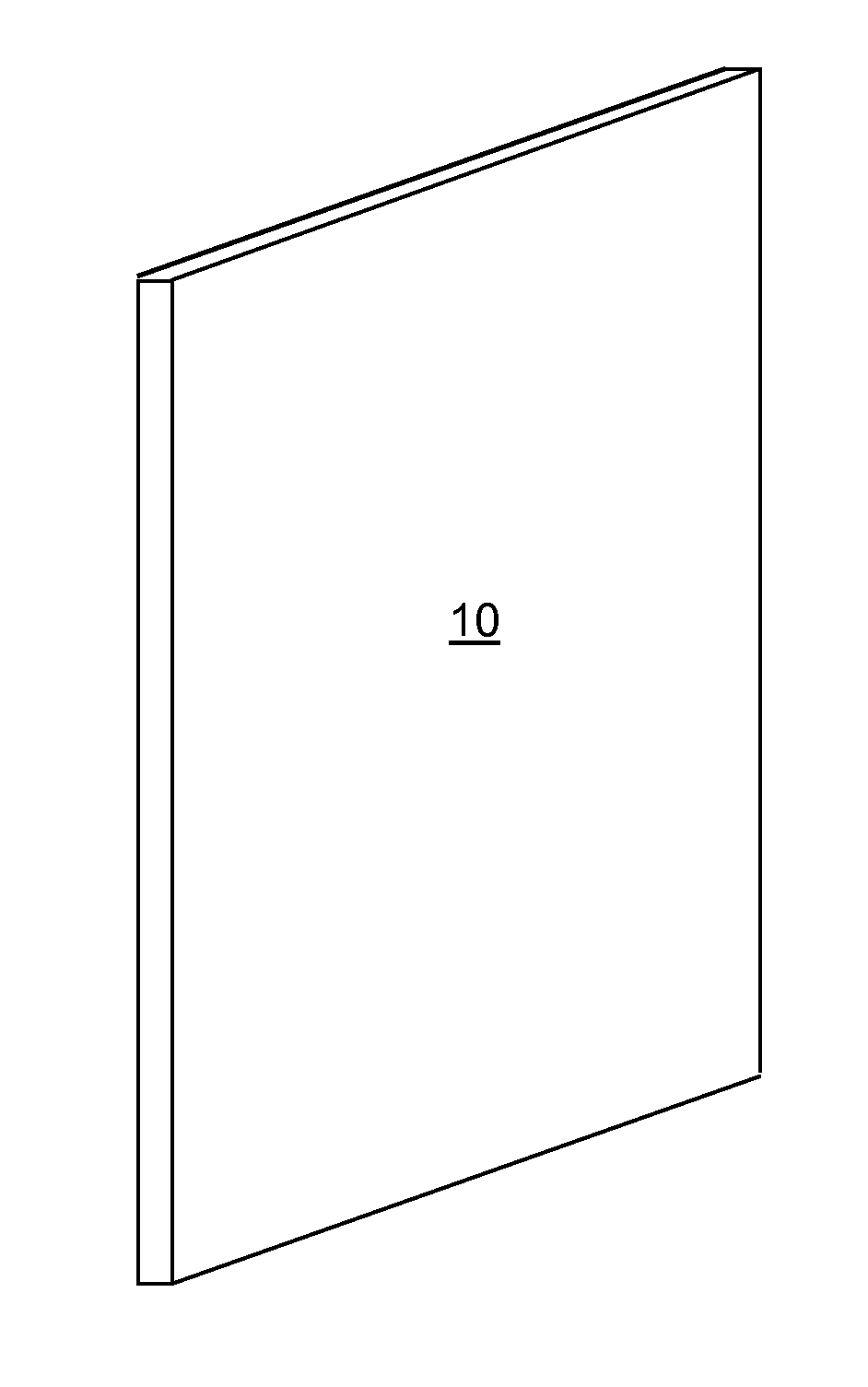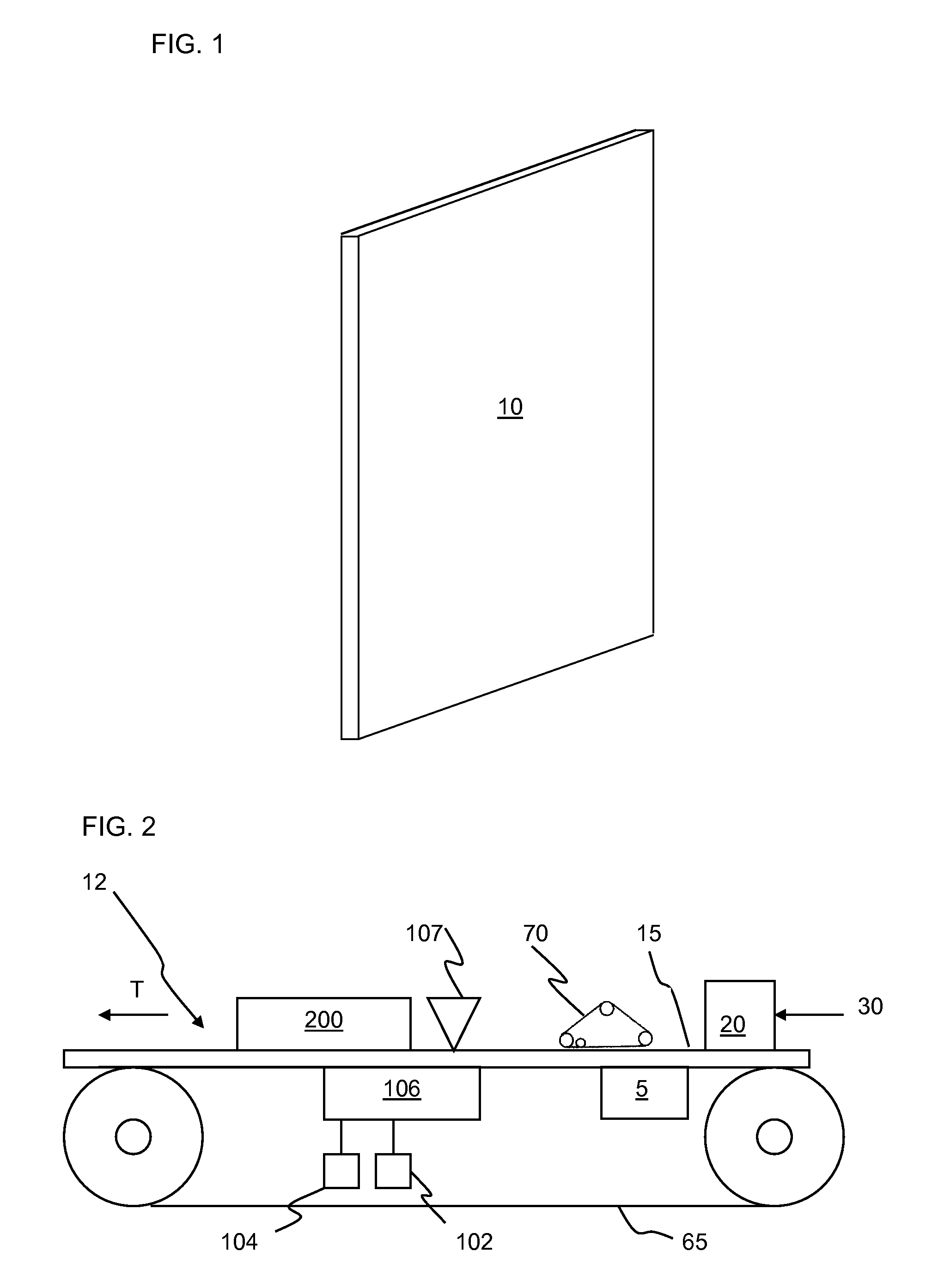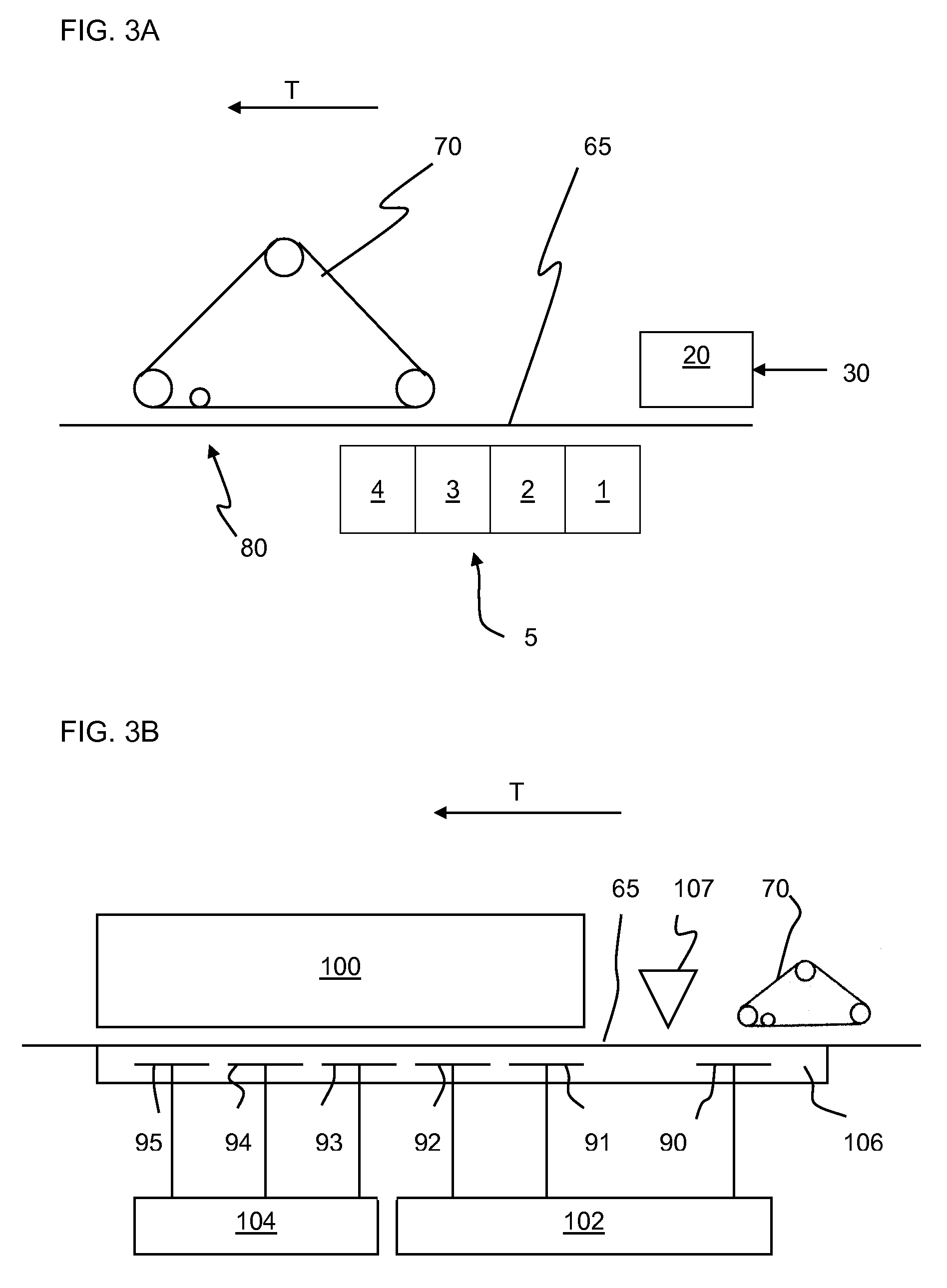Process for producing a low density acoustical panel with improved sound absorption
a technology of sound absorption and low density, which is applied in the direction of ceilings, paper after-treatment, solid waste management, etc., to achieve the effects of maximizing gravity drainage, improving acoustical absorption properties, and low density
- Summary
- Abstract
- Description
- Claims
- Application Information
AI Technical Summary
Benefits of technology
Problems solved by technology
Method used
Image
Examples
example 1
This example employed a target mixture comprising about 93 wt. %, mineral wool, about 4.7 wt. %, thermoplastic binders and about 2.0 wt. %, starch on a dry ingredient basis.
The panels were made as described above in the section entitled “Making a Panel of the Present Invention”.
The Gravity Drainage Box Settings (see FIG. 3A) and Vacuum Box Settings (see FIG. 3B) for the Hi-NRC acoustical boards of the present invention are compared to the current commercial MARS® acoustical board, which has an NRC of 0.70, in TABLES 2 and 3. The gravity drainage boxes are labeled 1, 2, 3 and 4 as in FIG. 3A. The vacuum boxes are labeled 90, 91, 92, 93, 94 and 95 as in FIG. 3B.
TABLE 2Gravity Drainage Box SettingsBase matBase matThicknessDensityGravityGravityGravityGravityProduct(in.)(lbs / ft3)NRCBox 1Box 2Box 3Box 4Standard0.81015.00.70closedclosed½ openopen1MARS ®acousticalboardHi-NRC0.90014.50.80closedclosed½ openopen1acousticalboard #1Hi-NRC1.05012.50.90closedclosedopenopen1acousticalboard #21Box 4...
example 2
Preparation of Plant Scale Boards
The press was raised to the maximum position, gravity drainage was maximized, and vacuum in the press box was varied while other vacuum settings were left in their conventional position. Thus, the trial conditions for this data included a raised top wire former 70 (hereinafter also referred to as a “press”) raised to a maximum position, maximized gravity drainage and variable vacuum settings on the AP vacuum box with the other vacuum settings the same as the standard MARS® acoustical board product. Any dust and broke has been removed. Note that the wet end sample is taken immediately after the AP vacuum box. TABLE 4 shows the resulting data.
TABLE 4PressVacuumMoistureBoxThicknessWeightDensityContentBoard #(in Hg)(in)(lbs)(lbs / ft3)(%)ENRC1A0.001.18641.2111.0884.20.8901B0.001.17240.0510.9084.20.8902A0.501.04938.3011.6481.40.8752B0.501.04239.4612.0881.40.8753A1.000.95835.2811.7473.80.8343B1.000.98736.6911.8573.80.8344A1.400.98436.8211.9370.70.8364B1.400....
example 3
Preparation of Plant Scale Boards
The trial data of TABLE 5 demonstrates that simply raising the press has a minimal effect on thickness, density, and ENRC. The only difference between these two sets of data (“control” and “No Press”) was that the top wire former 70 was raised to its maximum position for the samples labeled “No Press”. The samples were taken at the trimmer and no wet end samples were taken. The press was raised to the maximum position from (from 0.780 inches to 1.187 inches). The gravity box settings were left in the standard positions.
TABLE 5Press VacuumThicknessWeightDensityBoard #Box (inches Hg)(in)(lbs)(lbs / ft3)ENRCControl #11.860.82638.4514.840.704Control #21.860.81538.9415.240.700No Press #11.860.84737.6114.160.730No Press #21.860.81836.8314.360.729No Press #31.860.85137.0713.890.707
Simply raising the press (in the absence of also increasing gravity drainage and reducing vacuum settings produced only a small reduction in base mat density and only a slight incre...
PUM
| Property | Measurement | Unit |
|---|---|---|
| density | aaaaa | aaaaa |
| thickness | aaaaa | aaaaa |
| thickness | aaaaa | aaaaa |
Abstract
Description
Claims
Application Information
 Login to View More
Login to View More - R&D
- Intellectual Property
- Life Sciences
- Materials
- Tech Scout
- Unparalleled Data Quality
- Higher Quality Content
- 60% Fewer Hallucinations
Browse by: Latest US Patents, China's latest patents, Technical Efficacy Thesaurus, Application Domain, Technology Topic, Popular Technical Reports.
© 2025 PatSnap. All rights reserved.Legal|Privacy policy|Modern Slavery Act Transparency Statement|Sitemap|About US| Contact US: help@patsnap.com



